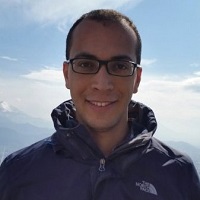
Supervisors: Patrice Gergaud (CEA-Leti), Philippe Rodriguez (CEA-Leti), Fabrice Nemouchi (CEA-Leti) and Hubert Renevier (LMGP)
Abstract
In the context of continuous CMOS downscaling, numerous solutions are being investigated, including architectural, material and process solutions. One promising way of enhancing the CMOS performances is to change the channel material and switch from Si to III-V materials. These materials present many benefits like having a much greater charge carrier mobility than Si and also present the possibility to be epitaxially grown on conventional 300 mm substrates. To achieve a fully operational device, it is important, among others key processes, to properly study and develop the metal/semiconductor contact issues. One of the most suitable contact integration is to form a new compound by solid-state reaction between a chosen and accurate metal and the semiconductor. Indeed, like silicide processes that have been widely investigated during the last 20 years, metal/III-V intermetallics formation has to be more precisely examined.
Due to the mono-crystalline and epi-like aspect of so-formed ultra-thin intermetallics (from 20 nm to 100 nm), an X-ray diffraction methodology that measures the reciprocal space as a whole is mandatory, otherwise some reflections may be omitted and the intermetallic compound not fully characterized. In this seminar, we will present the recent studies, performed by 3D Reciprocal Space Mapping along with other characterization techniques, of metal/InGaAs intermetallics. The texture, structure, stoichiometry and morphology of the so-formed intermetallic layer is investigated according to annealing temperature (by Rapid Thermal Process), nature of the substrate (InP and GaAs/Si) and the deposited metal. Indeed, we observe considerable evolution on texture, structure and stoichiometry by varying one of those parameters.
This work is partially supported by the LabEx Minos ANR-10-LABX-55-01. This work was also supported by the French National Research Agency (ANR) through the "Recherche Technologique de Base" (RTB) Program and benefits from access to the Nano-Characterization Platform (PFNC) at CEA-Grenoble
Laboratoire LMGP
3 parvis Louis Néel - 38000 Grenoble
Accès : TRAM B arrêt Cité internationale


